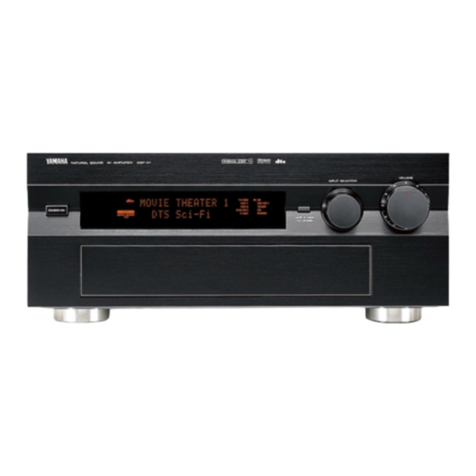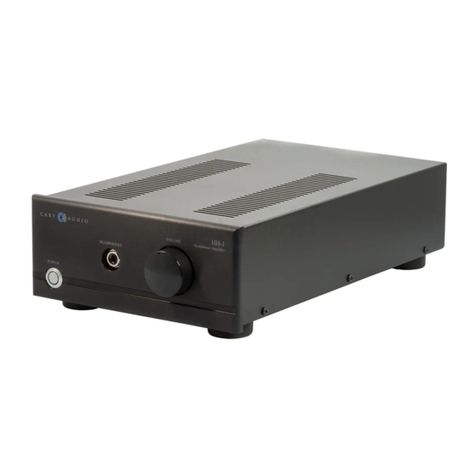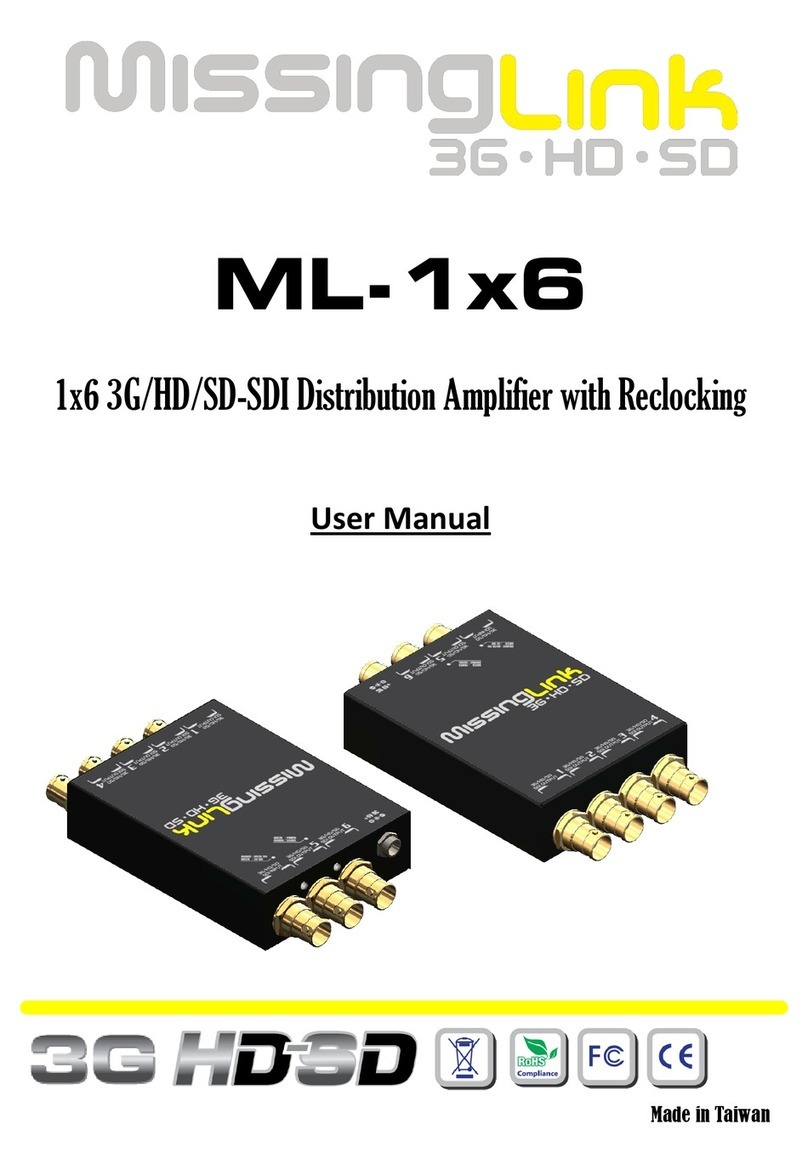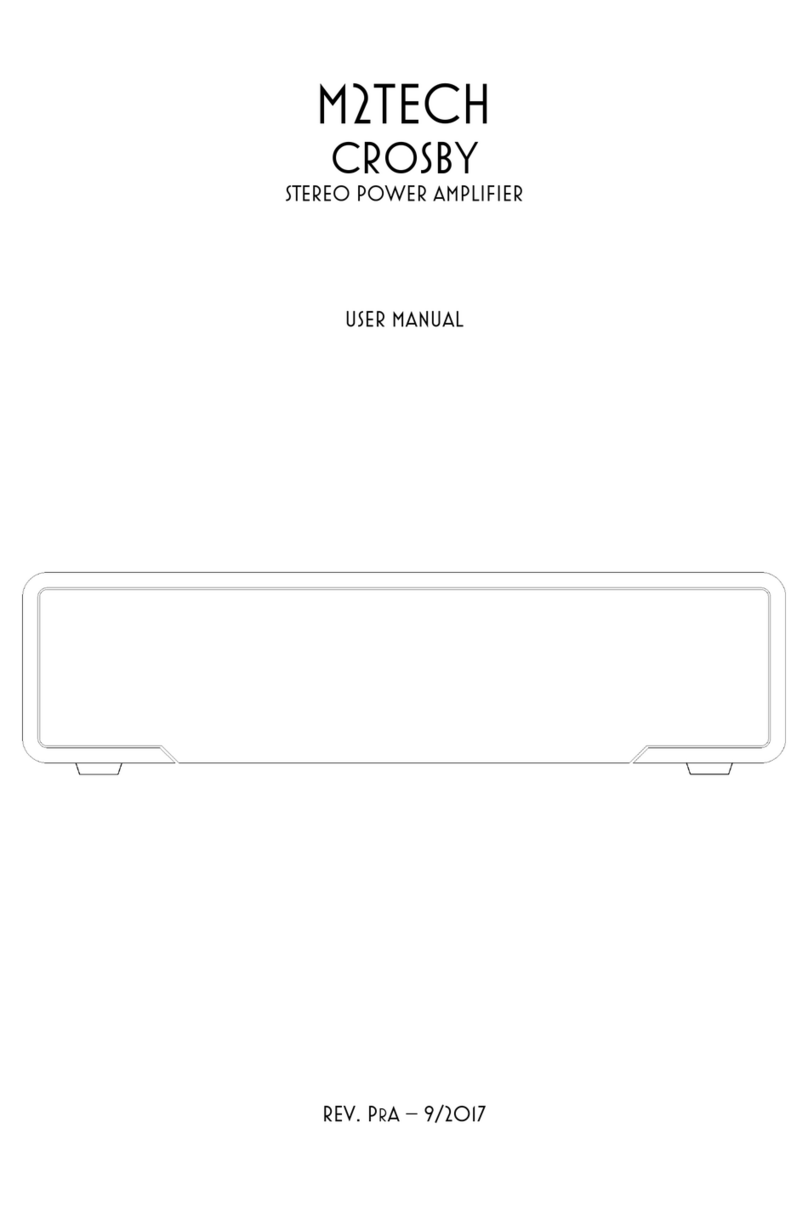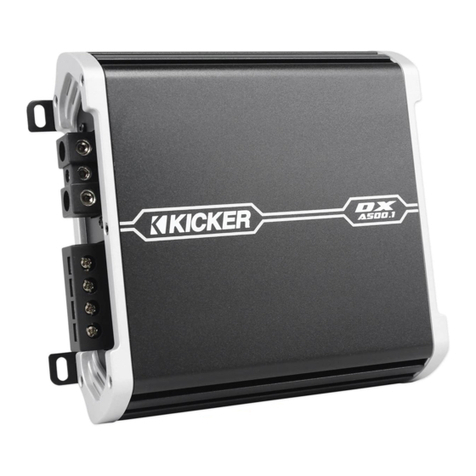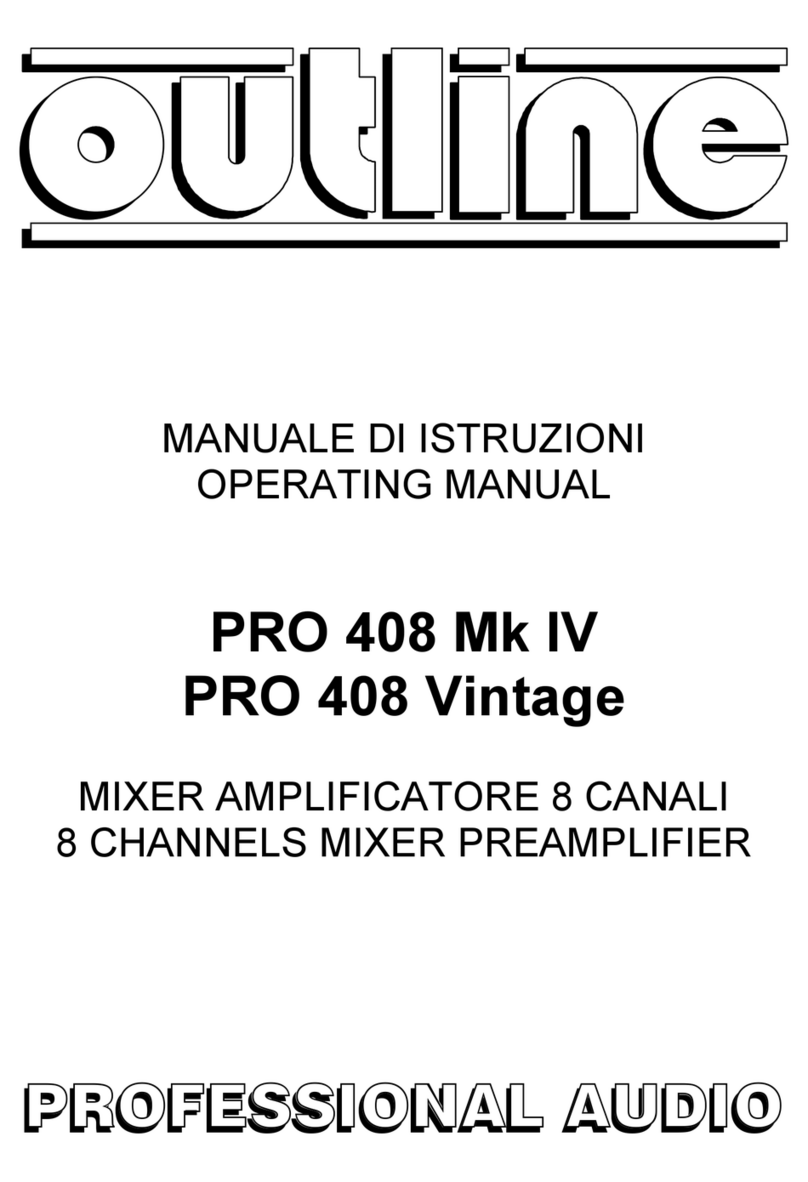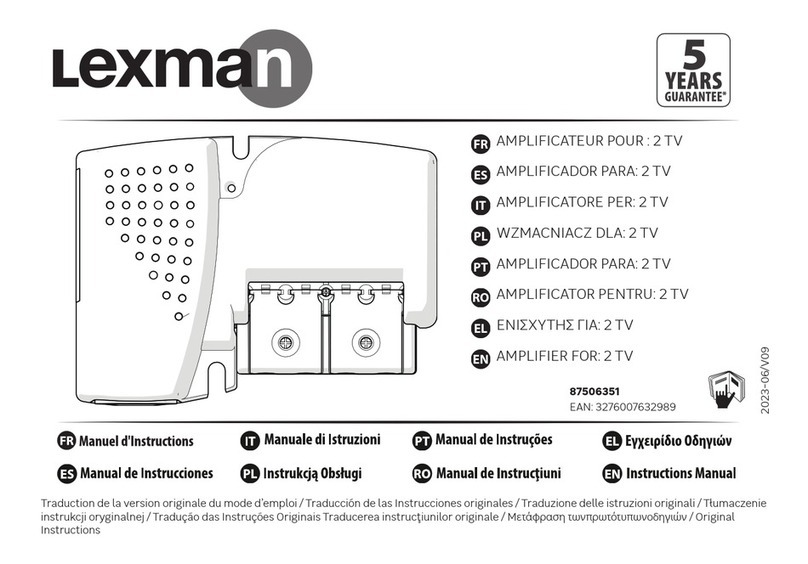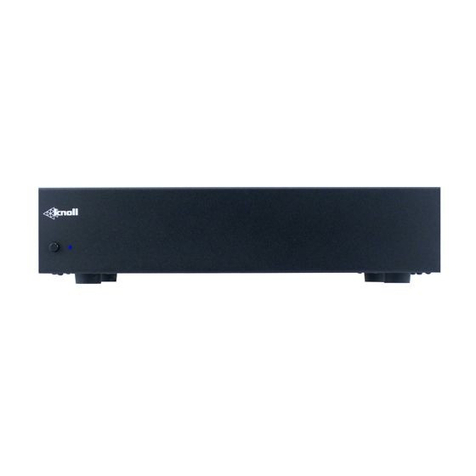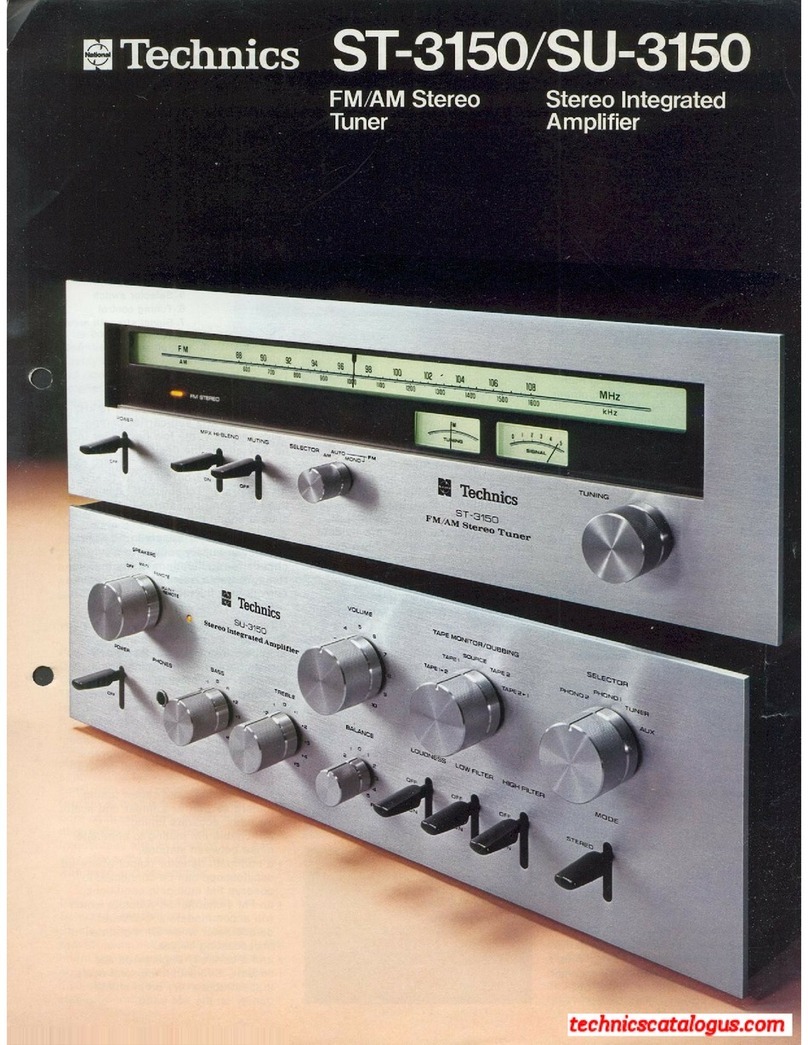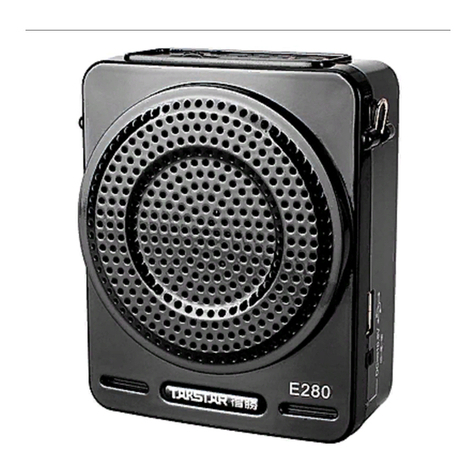Teletronics International ANT-O2412 Quick guide

Extended Range Amplified WLAN System Guide
Version 07/18/02
Teletronics International
Extended Range Amplified Wireless LAN
System
(For Cisco Aironet 350 Series Wireless Product)
System Description, Configuration and
Installation Guide
Teletronics International Inc.
1803 Research Blvd.
Suite 404
Rockville, MD 20850

Extended Range Amplified WLAN System Guide
Version 07/18/02
TABLE OF CONTENTS
1INTRODUCTION............................................................................................................................................5
1.1 ABOUT THIS GUIDE ...........................................................................................................................................5
1.2 WHO SHOULD USE THIS GUIDE .........................................................................................................................5
1.3 NOTES AND WARNINGS TO THE USER AND INSTALLER .....................................................................................5
1.3.1 Interference and Equipment Limits..........................................................................................................5
1.3.2 Cautions and Warnings ............................................................................................................................6
2SYSTEM DESCRIPTION................................................................................................................................9
2.1 EXTENDED RANGE WLAN SYSTEM INFRASTRUCTURE.....................................................................................9
2.2 GENERAL DESCRIPTION.....................................................................................................................................9
2.3 SYSTEM FEATURES..........................................................................................................................................10
2.4 PLATFORM MODELS ........................................................................................................................................10
2.4.1 Wireless LAN External Amplifier .........................................................................................................11
2.4.2 Additional Wireless LAN System Components.....................................................................................13
3CONFIGURING THE EXTENDED RANGE AMPLIFIED WLAN SYSTEM............................................14
3.1 SETTING THE CISCO AIRONET CHANNEL SETTINGS.........................................................................................14
3.2 CONFIGURING THE CISCO AIRONET RADIO UNIT ANTENNA CONNECTION PORT ............................................15
3.3 CONFIGURING THE CISCO AIRONET RADIO UNIT OUTPUT POWER SETTING ...................................................15
3.4 OTHER WIRELESS LAN SYSTEM CONFIGURATIONS........................................................................................16
4INSTALLATION...........................................................................................................................................16
4.1 INSTALLATION NOTES .....................................................................................................................................16
4.1.1 Primary Required Tools.........................................................................................................................16
4.1.2 Other Required Equipment.....................................................................................................................16
4.1.3 Helpful Tools and Equipment ................................................................................................................16
4.1.4 Installation Site Survey ..........................................................................................................................17
4.1.5 Installation Safety and Equipment Warnings.........................................................................................17
4.1.6 Cisco Aironet Programming and Settings..............................................................................................18
4.1.7 Antenna Installation ...............................................................................................................................18
4.2 INSTALLING THE EXTENDED RANGE (AMPLIFIED) WLAN SYSTEM................................................................18
4.2.1 Installing and Cabling the Antenna and Amplifier Unit.........................................................................19
4.2.2 Installing and Connecting the Cisco Aironet 350 Series Radio Device.................................................20
4.2.3 Installing and Positioning of Antenna....................................................................................................20
5POST INSTALLATION TESTING...............................................................................................................21
5.1 BASIC SYSTEM OPERATIONAL CHECKS...........................................................................................................21
5.2 WLAN SYSTEM DIAGNOSTICS........................................................................................................................22
APPENDIX INDEX
APPENDIX A ACRONYM LIST............................................................................................................23
APPENDIX B WIRELESS.......................................................................................................................24

Extended Range Amplified WLAN System Guide
Version 07/18/02
TABLE INDEX
Table 1-1: Maximum Permissible Exposure Distance For 1 W Amplifier and Antenna Type.............................7
Table 1-2: Maximum Permissible Exposure Distance For 500 mW amplifier and Antenna Type.......................8
Table 2-1: 1-Watt SmartAmp Power Amplifier Specifications..........................................................................12
Table 2-2: 500 mW SmartAmp Power Amplifier Specifications .......................................................................12
Table 3-1: Authorized Cisco Aironet Channel Settings......................................................................................14


Extended Range Amplified WLAN System Guide
Version 07/18/02
1 Introduction
1.1 About this Guide
This guide provides a system technical description and generalized overview of the Teletronics Extended
Range Amplified WLAN System engineered for exclusive use with the Cisco Aironet 350 Series Wireless
product. It also sets forth the mandatory technical parameters, installation specifics, warnings, and
configuration steps necessary for professional wireless system installation. Adherence to the installation
parameters set forth in this guide is essential for compliance with current FCC rules, regulations, and FCC
grants received by Teletronics International for FCC ID: MFM SAMP24Wand FCC ID: MFM
SAMP24S. It is not the intention of this guide to describe all the necessary installation facets for a
complete wireless LAN and antenna system installation. Installation details such as the mounting of the
wireless LAN radio hardware, network cabling, antenna cabling, antenna mast/tower installation, and/or
antenna grounding systems should be referred to a professional WLAN system installer. This guide is
specific only to the use of the Teletronics Extended Range Amplified WLAN System, and the equipment
configuration parameters necessary for properly installing the system within the overall wireless LAN
system. This installation guide is included with each Teletronics Extended Range Amplified WLAN
System and it is intended to supplement the Cisco Aironet product and other equipment manufacturer
User and Installation Guides included within the WLAN system for the individual system components.
This Installation Guide is intended for use by the professional wireless LAN system installer.
1.2 Who Should Use this Guide
Installation of the Teletronics Extended Range Amplified WLAN System should be accomplished only
by a qualified wireless LAN system installer who is:
• Knowledgeable of the use, installation and configuration procedures for the Cisco Aironet 350 Series
Wireless product line and associated networking components.
• Knowledgeable of each system component’s equipment User and Installation Guide.
• Knowledgeable of the installation and configuration procedures for the site’s network infrastructure
system and wiring.
• Knowledgeable of the installation procedures, safety, and code requirements for the site’s antenna,
antenna mast, antenna cabling, and installation. Teletronics highly recommends that the antenna
installation be performed by a qualified antenna installation professional.
1.3 Notes and Warnings to the User and Installer
1.3.1 Interference and Equipment Limits
This equipment is to be operated in compliance with the limits of Part 15 of the Federal Communications
Commission (FCC) Rules. As such, operation of this equipment may not cause harmful interference, and
this equipment must accept any interference received, including interference that may cause undesired
performance.

Extended Range Amplified WLAN System Guide
Version 07/18/02
FCC Part 15 rules and specifications are designed to limit harmful interference in a residential and
commercial installation. This equipment generates, uses, and can radiate radio frequency energy. This
equipment may cause harmful interference to radio communications if not installed and operated
according to the instructions provided in this manual. Proper installation and operation is no guarantee
against interference. If interference to radio or television reception is noticed, turn this equipment off and
on to determine if this equipment is causing the interference. If so, the installer/user is encouraged to
attempt to correct the problem using any of the following measures:
• Change antenna position and/or orientation.
• Provide more separation between the equipment and receiver.
• Ensure the equipment is not connected to the same circuit (power) as the receiver.
• Reduce the radio transmitter power output level.
• Consult with your professional wireless system installer for interference mitigation.
This device must not be colocated with any other antenna or transmitters.
NOTE: Any changes or modifications of the equipment not expressly approved by Teletronics could void
the WLAN system grant of operation and void the authority of the user to operate the equipment.
1.3.2 Cautions and Warnings
CAUTION: The radiated output power of this product meets with FCC radio frequency (RF)
exposure limits. However, this equipment should be used in such a manner as to minimize the potential
for human exposure. Table 1-1 and Table 1-2 below address the Maximum Permissible Exposure (MPE)
distances that must be maintained for each extended range amplified WLAN system model and antenna
type.

Extended Range Amplified WLAN System Guide
Version 07/18/02
Table 1-1: Maximum Permissible Exposure Distance For 1 W Amplifier and Antenna
Types
Antenna Part
# (Antenna
Type)
Specified
Antenna
Gain
(dBi)
Maximum
Cisco
Aironet
Radio
Output
Power
(dBm)
Maximum
Amplifier
Output
Power
(dBm)
Minimum Cable
Length (dB loss)
Between Antenna &
Power Amplifier
for
LMR 600/LMR 400
Maximum
Extended
Range
WLAN
System
EIRP
(dBm)
Maximum
Permissible
Exposure (MPE)
Distance
cm (inches)
ANT-O2412
(Omni
directional) 12 100mW
(+20dBm) 1 Watt
(+30dBm) 150’/98’
(6.6 dB) 35 20cm
(7.9 inches)
ANT-O2409
(Omni
directional) 9 100mW
(+20dBm) 1 Watt
(+30dBm) 113’/74’
(5.0 dB) 34 20cm
(7.9 inches)
ANT-O2408
(Omni
directional) 8 100mW
(+20dBm) 1 Watt
(+30dBm) 100’/65’
(4.4 dB) 34 20cm
(7.9 inches)
ANT-P2419
(Patch) 19 100mW
(+20dBm) 1 Watt
(+30dBm) 305’/197’
(13.4 dB) 35.8 200cm
(79 inches)
ANT-P2418
(Patch) 18 100mW
(+20dBm) 1 Watt
(+30dBm) 277’/179’
(12.2 dB) 35.8 200cm
(79 inches)
ANT-P2415
(Patch) 15 100mW
(+20dBm) 1 Watt
(+30dBm) 216’/140’
(9.5 dB) 35.7 200cm
(79 inches)
ANT-P2413
(Patch) 13 100mW
(+20dBm) 1 Watt
(+30dBm) 159’/103’
(7.0 dB) 35.7 200cm
(79 inches)
ANT-P2412
(Patch) 12 100mW
(+20dBm) 1 Watt
(+30dBm) 152’/99’
(6.7 dB) 35.7 200cm
(79 inches)
ANT-G2418
(Grid) 18 100mW
(+20dBm) 1 Watt
(+30dBm) 150’/98’
(6.6 dB) 41 200cm
(79 inches)
ANT-G2424
(Grid) 24 100mW
(+20dBm) 1 Watt
(+30dBm) 250’/162
(11.0 dB)’ 43 200cm
(79 inches)
ANT-D2421
(Dish) 20.5 100mW
(+20dBm) 1 Watt
(+30dBm)
150’/98’
(6.6 dB) 44 200cm
(79 inches)

Extended Range Amplified WLAN System Guide
Version 07/18/02
Table 1-2: Maximum Permissible Exposure Distance For 500 mW amplifier and
Antenna Types
Antenna Part#
(Antenna
Type)
Specified
Antenna
Gain
(dBi)
Maximum
Cisco
Aironet
Radio
Output
Power
(dBm)
Maximum
Amplifier
Output
Power
(dBm)
Minimum Cable
Length (dB loss)
Between Antenna
& Power
Amplifier for
LMR 600/LMR
400
Maximum
Extended
Range
WLAN
System
EIRP
(dBm)
Maximum
Permissible
Exposure (MPE)
Distance cm
(inches)
ANT-O2412
(Omni
directional)
12
100mW
(+20dBm) 500 mW
(+27dBm)
150’ /98’
(6.6 dB)
32.4 20cm
(7.9 inches)
ANT-O2409
(Omni
directional) 9 100mW
(+20dBm) 500 mW
(+27dBm) 75’/49’
(3.3 dB) 32.7 20cm
(7.9 inches)
ANT-O2408
(Omni
directional) 8 100mW
(+20dBm) 500 mW
(+27dBm) 50’ /33’
(2.2 dB) 32.8 20cm
(7.9 inches)
ANT-P2419
(Patch) 19
100mW
(+20dBm) 500 mW
(+27dBm) 300’/195’
(13.2 dB) 32.8 200cm
(79 inches)
ANT-P2418
(Patch) 18
100mW
(+20dBm)
500 mW
(+27dBm)
265’/172’
(11.7 dB) 33.3 200cm
(79 inches)
ANT-P2415
(Patch) 15
100mW
(+20dBm) 500 mW
(+27dBm) 157’/102’
(6.9 dB) 35.1 200cm
(79 inches)
ANT-P2413
(Patch) 13
100mW
(+20dBm)
500 mW
(+27dBm)
95’/62’
(4.2 dB) 35.8 200cm
(79 inches)
ANT-P2412
(Patch) 12
100mW
(+20dBm) 500 mW
(+27dBm) 73’/47’
(3.2 dB) 35.8 200cm
(79 inches)
ANT-G2418
(Grid) 18
100mW
(+20dBm) 500 mW
(+27dBm) 250’/162’
(11.0 dB) 34 200cm
(79 inches)
ANT-G2424
(Grid) 24
100mW
(+20dBm) 500 mW
(+27dBm) 300’/195’
(13.2 dB) 37.8 200cm
(79 inches)
ANT-D2421
(Dish) 20.5
100mW
(+20dBm) 500 mW
(+27dBm) 100’/65’
(4.4 dB) 43.1 200cm
(79 inches)

Extended Range Amplified WLAN System Guide
Version 07/18/02
WARNING: When using the Teletronics Extended Range Amplified WLAN System in the
United States (or where FCC rules apply), it is the responsibility of the professional installer to ensure
that only the configurations shown in Table 1-1 and Table 1-2 above and elsewhere described in this
manual are used. The use of any other configuration other than those listed herein is expressly
forbidden in accordance with FCC rules CFR47 part 15.204.
WARNING: It is the responsibility of the professional installer to ensure that the system is used
exclusively for fixed, point-to-point operations.
Teletronics International is not responsible for any interference caused by unauthorized modification or
configuration programming of this device, or the substitution or attachment of antennas and equipment
other than that specified by Teletronics International.
2 System Description
2.1 Extended Range WLAN System Infrastructure
The Teletronics Extended Range Amplified WLAN System consists principally of installing wireless
LAN Access Points (APs) or WLAN cards with an extended range (amplified) system at a customer
chosen site that have traditional wired network access (T-1, Fiber, or other medium) connectivity. When
used in conjunction with the site’s “wired-to-wireless” infrastructure, the extended range WLAN system
will essentially extend the WAN fixed site infrastructure within the chosen area wirelessly to any mobile
wireless client card and/or to other Extended range AP/Bridge fixed sites operating within the wireless
cell range (zone) of that site.
2.2 General Description
The Teletronics Extended Range Amplified Wireless LAN System is designed to be used strictly with the
system-included Cisco Aironet 350 Series Wireless product for offering Direct Sequence Spread
Spectrum (DSSS) wireless transceiver operation at the 11 Mbps data rate. It fully supports wireless
system connectivity and performance compatibility as described by the IEEE 802.11b specification. This
product allows for a high-performance extended range system capability to be employed for supporting a
mobile wireless client unit communicating back to an Access Point/Bridge unit at a fixed site station, or
to allow for extended wireless communications between point-to-point, or point-to-multipoint Access
Point/Bridge fixed sites. The fixed site WLAN amplified system provides for a significantly improved
operating range of the wireless network infrastructure.
The amplified WLAN system contains and is authorized for use only with the Cisco Systems Aironet 350
Series Wireless product line that incorporates the Cisco Aironet LMC-350 radio module. This product
line currently includes the following Cisco Aironet 350 Series* products:

Extended Range Amplified WLAN System Guide
Version 07/18/02
• Access Point unit (AIR-AP352E2R);
• Multifunction Bridge unit (AIR-BR350)
* The above listed Cisco Aironet 350 Series products when used separately from the Teletronics
Extended Range Amplified WLAN System are covered under an FCC Grant of Authorization and
Compliance under the manufacturer Cisco Systems, Inc., FCC ID: LDK102040.
2.3 System Features
The Teletronics Extended Range Amplified WLAN System offers the following state-of-the-art features
and capabilities:
• Industry Leading Cisco Aironet 350 Series Wireless Radio Unit* - Access Point; or Bridge unit (*per
the system model radio features ordered).
• IEEE 802.11b Wireless LAN 2.4 GHz Radio System Compatibility.
• 7 available channels in US/Canada – (Standard 802.11b US/Canada channels 1, 2, 10, and 11 are
FCC prohibited from use with an amplified system operating above 100mW).
• Bi-Directional WLAN Linear Amplification with Built-in Ultra Low Noise Pre-amplifier for
providing reliable, long range WLAN radio link operation.
• Auto-ranging Amplifier Input Drive Level feature for compensating for feed line losses and yielding
maximized fixed RF output power to the antenna.
• Low Loss DC Power Injector to allow voltage feed via the antenna coaxial cable; therefore allowing
the weatherproof main amplifier unit to be remote mounted near the antenna for minimized PA to
Antenna cable loss in fixed site installations.
• Variable Length Radio-to-DC Injector and Power Amplifier feed line cabling for flexible and easy
antenna system installations.
• Customized Power Amplifier-to-Antenna Cable for low loss and installation unique lengths.
• Limited one year warranty.
2.4 Platform Models
The Teletronics Extended Range Amplified Wireless LAN System is available in two platform models –
1 W outdoor amplifier system and a 500 mW outdoor amplifier system. Each platform model is further
available in different antenna gain configurations and appropriate minimum cable length for best meeting
a system installation’s particular coverage concerns.

Extended Range Amplified WLAN System Guide
Version 07/18/02
The Teletronics Extended Range Amplified Wireless LAN System configurations available for use with
the Cisco Aironet 350 Series Wireless products are:
• 1 W outdoor amplifier system:
o 12dBi Omni directional
o 9dBi Omni directional
o 8dBi Omni directional
o 19dBi Patch
o 18dBi Patch
o 15dBi Patch
o 12dBi Patch
o 24dBi Grid
o 18dBi Grid
o 20.5dBi Dish
• 500 mW outdoor amplifier system:
o 12dBi Omni directional
o 9dBi Omni directional
o 8dBi Omni directional
o 19dBi Patch
o 18dBi Patch
o 15dBi Patch
o 12dBi Patch
o 24dBi Grid
o 18dBi Grid
o 20.5dBi Dish
2.4.1 Wireless LAN External Amplifier
Each of the Teletronics Extended Range Amplified WLAN Systems described above uses the Teletronics
International, Inc. Smart Amplifier (SmartAmp) Bi-directional Power Amplifier 2.4 GHz version. The
system will incorporate either the outdoor model 1-Watt AGC Amplifier or the 500 mW model AGC
outdoor amplifier with appropriate transmission line cabling lengths, and high gain antennas for a
complete fixed site system installation.
Both of the Teletronics SmartAmp 2.4 GHz amplifier models feature an auto ranging input RF drive level
capability which allows the amplifier to automatically determine the input RF level received from the
Cisco Aironet transceiver equipment and set its internal power gain to yield the full-programmed RF
output level. This auto ranging feature eliminates the necessity for (and inherent errors in) calculating
feed line losses between the data transceiver (Cisco radio card/unit) and the main amplifier unit. The auto
ranging feature of the amplifier allows for variable installations to be handled with greater ease and
flexibility for feed line cable lengths and routing concerns. However, it is important that each systems-
specified minimum transmission cable lengths (dB loss) between the main amplifier unit and antenna are
maintained for power compliance to FCC EIRP specifications.

Extended Range Amplified WLAN System Guide
Version 07/18/02
The SmartAmp power amplifier specifications and input drive level for desired output power levels are
specified in Tables 2-1 and 2-2 for each different power output model below:
Table 2-1: 1-Watt SmartAmp Power Amplifier Specifications
Operating Range 2400 ~ 2500 MHz
Operating Mode Bi-directional TDD
Transmit Output Power +30 dBm (1 Watt)
Transmit Input Power 9 dB min, 23 dB max
Transmit Gain Automatically adjusts up to 27dB
Receive Gain 17 dB
Frequency Flatness ±1.0 dB
Noise Figure 3.5 dB
Lightening Protection Direct DC ground at antenna port
DC Surge Protection At 12 V DC input
LED indicators on Amp Tx: Green, Rx: Red
Operating Temperature -40 °C ~ + 75 °C
Power Supply 12 V DC at 1.1 Amp
RF Connector Type N, Female
Table 2-2: 500 mW SmartAmp Power Amplifier Specifications
Operating Range 2400 – 2500MHz
Operating mode Bi-directional TDD
Transmit Output Power +27dBm (500mW)
Transmit Input Power 0 dBm min, 23 dBm max
Transmit Gain Automatically adjusts up to 26dB
Receive Gain 14 dB
Frequency Flatness +/- 1.0 dB
Noise Figure 3.5 dB
Lightning Protection Direct DC ground at Antenna port
DC Surge Protection At 12 VDC input
LED Indicators Tx: Green, Rx: Red
Operating Temperature -20 C ~ 70 C
Power Supply 12 VDC at 0.7 amps
Connectors Type N, Female
CAUTION: The configured output power for the Cisco Aironet device sets the
maximum expected input drive level to the external power amplifier. Therefore, it is essential that the
Cisco Aironet device be configured for an output power level consistent with the charted input drive
values stated in Tables 2-1 and 2-2 above with respect to the power amplifier specifications and feed
line cable losses.

Extended Range Amplified WLAN System Guide
Version 07/18/02
The unit can be used in combination with different types of cables as listed in the following table. The
length of the cable between the amplifier and the antenna should respect the cable loss listed in Table 1-1
for the 1 W amplifier, and Table 1-2 for the 500 mW amplifier, in order to maintain FCC compliance.
Table 2-3: Nominal Loss Characteristics for Different Cables
Nominal Loss Characteristics For Different Cables
(Decibels per hundred feet at 2.5 GHz)
LMR-400
LMR-500
LMR-600
LMR-900
LMR-1200
6.8 dB
5.5 dB
4.4 dB
3.0 dB
2.3 dB
2.4.2 Additional Wireless LAN System Components
The wireless LAN integration company/installer will be responsible for providing any additional site
WLAN system equipment, engineering, and installation services to include providing for:
• Site Survey Engineering & Design;
• Antenna Mast Assemblies;
• Antenna System Grounding; and
• Professional installation services per this Extended Range Amplified WLAN System Installation
Guide and the system component equipment manufacturer User Guide and Installation Manuals.

Extended Range Amplified WLAN System Guide
Version 07/18/02
3 Configuring the Extended Range Amplified WLAN System
3.1 Setting the Cisco Aironet Channel Settings
The Teletronics Extended Range Amplified WLAN System is approved for operation on seven (7) US
and Canada 802.11b operating frequency channels. These seven channels are a subset of the 11
US/Canada standard IEEE 802.11 channels. The wireless LAN installer should refer to the Cisco Aironet
product equipment User Guide and Installation Manual for specific channel configuration and setting
procedures. Table 3-1 below outlines the authorized 802.11 channels available for use with the extended
range WLAN system.
NOTE: This equipment is not authorized and may not be operated on IEEE 802.11 channels 1, 2, 10, and
11 at output power levels above 100mW. If you wish to interoperate with IEEE 802.11 Wireless LAN
compatible equipment on these excluded channels, you should NOT use this amplified antenna system.
This extended range amplified antenna system is for use at power levels above the Cisco Aironet
equipment’s standard 100mW output; and therefore you must set the Cisco Aironet equipment to use only
one of the channels (A-G) shown below.
Table 3-1: Authorized Cisco Aironet Channel Settings
Channel Corresponding IEEE 802.11 Channel Channel Center Frequency
NOT USED 1 2412
NOT USED 2 2417
A 3 2422
B 4 2427
C 5 2432
D 6 2437
E 7 2442
F 8 2447
G 9 2452
NOT USED 10 2457
NOT USED 11 2462

Extended Range Amplified WLAN System Guide
Version 07/18/02
3.2 Configuring the Cisco Aironet Radio Unit Antenna Connection Port
The Teletronics Extended Range Amplified WLAN Antenna System can only be used with the Cisco
Aironet 350 Series wireless products that are designed for use with an external antenna connection
capability. Specifically, these Cisco Aironet 350 Series products include the AIR-AP352E2R Access
Point unit, and the AIR-BR350Bridge units.
These particular Cisco Aironet units are each outfitted with two external antenna connection ports. Each
of the radio unit’s antenna connection ports are uniquely designed for use with either the Reverse-
Polarity-TNC male connector, such as in the case of the Access Point, and Bridge.. The WLAN system
will include a matching Cisco Aironet radio-to-DC Injector connecting cable for use in connecting the
antenna system to each kit’s (ordered) Cisco Aironet radio component.
The Cisco Aironet 350 Series product manages its “in use” antenna connection ports via software
configuration control over the left and right antenna ports based upon enabling or disabling the left or
right antenna port, or enabling or disabling the receive diversity function (disables the left antenna). The
Cisco Aironet radio unit must be configured to use the right or primary antenna connection port as the
primary or sole transmit/receive antenna connection port. The unit’s left antenna connection should be
configured as disabled (or diversity off), unless a Receive Diversity antenna is to be used within the
particular system installation. In all installations, the primary/right (transmit & receive) antenna
connection port will be used as the point of attachment for the extended range amplified system. The
wireless LAN installer should refer to the Cisco Aironet product equipment User Guide and Installation
Manual for reviewing, configuring, and setting the antenna connection port parameters.
3.3 Configuring The Cisco Aironet Radio Unit Output Power Setting
The Teletronics Extended Range Amplified WLAN System is approved for operation with the Cisco
Aironet 350 Series product at various power output levels specific to the power amplifier output power
and the system model supporting the Cisco radio unit. Section 2.4 lists the Cisco Aironet radio unit
power settings per system amplifier and antenna gain authorized for use. The power output
specifications, cable lengths, and antenna gains listed within Tables 1-1 and 1-2 must be adhered to with
respect to the Teletronics Extended Range Amplified WLAN System model being installed.

Extended Range Amplified WLAN System Guide
Version 07/18/02
The wireless LAN installer should refer directly to the Cisco Aironet product equipment User Guide and
Installation Manual for proper configuration procedures in setting the required Cisco radio unit output
power level.
Warning: Operating the Cisco Aironet equipment with Power Amplifier power levels, cable length
and/or antenna gains in variance to the WLAN system specifications shown in Tables 1-1 and 1-2 is
prohibited and may exceed authorized FCC RF power level specifications.
3.4 Other Wireless LAN System Configurations
Any questions related to additional wireless LAN system component parameter configurations such as
Cisco Aironet radio unit network SSID and IP assignment; WEP encryption codes, protocol filtering, etc.
should be referred to the specific equipment User Guide for proper configuration procedures and settings.
4 Installation
4.1 Installation Notes
4.1.1 Primary Required Tools
• User guides and installation manuals for all equipment
• Assorted open-end and/or adjustable wrenches
• Antenna cable clamps and/or cable hanging kits
• Wire cutter/stripper
• Cable connector crimping tool
• Screwdriver set – cross tip and flathead
• Pliers
4.1.2 Other Required Equipment
• Suitable Antenna Mast Assembly; or
• Tower hardware
• Antenna Grounding Kit
4.1.3 Helpful Tools and Equipment
• Cellular telephones or walkie-talkies
• Binoculars
• Compass
• Leveling tool
• Handheld GPS
• Ladder

Extended Range Amplified WLAN System Guide
Version 07/18/02
4.1.4 Installation Site Survey
Prior to installing the Extended Range Amplified WLAN System, the site platform targeted for
installation must be surveyed for engineering design and installation. Adherence to Maximum
Permissible Exposure (MPE) RF Radiation Hazard distances must be reviewed and antenna locations
planned for minimizing potential RF energy human exposure levels to personnel working in the vicinity
of the amplified antenna location, as well as minimizing any potential co-site radio interference issues.
During fixed site WLAN surveys and analysis, emphasis should also be placed on locating the antenna in
a position that is free of obstructions near the antenna location. Such obstructions include large trees, air
conditioning units, other antenna masts, chimneys, retaining walls, and so forth, as they can significantly
affect the LOS range of the WLAN system. The site survey and resulting plan should take all these
elements into consideration. The fixed site antenna should be mounted as high as possible. The antenna
mast should place the antenna at least 10 to 15 feet above the rooftop or above any obstruction obstructing
the antenna’s line of sight (LOS) signal path. A note should be made of the antennas position, required
mast height, and the type of mounting hardware needed. Antenna-to-Antenna Mast U-bolt mounting
hardware is shipped with the Extended Range Amplified WLAN System and should meet the
requirements for most types of mast installation. The means for communicating with helpers at the
antenna site while conducting link testing should also be planned in advance. For instance, walkie-talkies
or cellular phones would be very helpful during this procedure.
Any necessary routing for the feed line antenna cable must be determined. If the cable extends through
the roof or wall, appropriate waterproof fittings and/or conduit paths must be used. A licensed antenna
specialist or roofing contractor should be consulted to assist with proper cable routing and antenna
installation specifics, as necessary. Electrical power considerations for fixed site installations must be
made in advance for properly installing the extended range antenna system.
4.1.5 Installation Safety and Equipment Warnings
NOTE: Only experienced antenna installers who are familiar with local building and safety codes, and
have been licensed by the appropriate government regulatory bodies wherever necessary, shall install the
antenna system. Failure to do so may void the product warranty, as well as expose the end-user to legal
and/or financial liabilities. Teletronics International Inc., its agents, resellers, or distributors, are not
liable for injury, damage, or violation of government regulations that may arise from failing to comply
with the guidelines described in this document.

Extended Range Amplified WLAN System Guide
Version 07/18/02
WARNING: Before performing any of the following steps, ensure there are no power lines
within 50 feet of the installation site. If a mast should fall during installation or during operation,
contact with any power line may result in fire and can be fatal.
WARNING PATCH & OMNI ANTENNAS: The Teletronics Extended Range Amplified WLAN
Systems are designed for antenna mounting in open areas such as on rooftops or building interior or
exterior walls. The antenna should be installed with at least 20 centimeters clearance from areas
generally occupied by people over an extended period of time (>30 minutes).
WARNING DISH & GRID ANTENNAS: The Teletronics Extended Range Amplified WLAN
Systems are designed for antenna mounting in open areas such as on rooftops or building exterior
walls. The antenna should be installed with at least 2 meters clearance from areas generally occupied
by people over an extended period of time (>30 minutes).
WARNING: Never use a power supply other than the one shipped with the system. Doing so
may cause damage to the radio and/or the amplifier.
4.1.6 Cisco Aironet Programming and Settings
The Cisco Aironet radio device should be verified or configured for its designated output power setting
prior to fix mounting the Cisco radio unit and main amplifier unit to a fixed site antenna mast.
4.1.7 Antenna Installation
Detailing a specific fixed site mast mount antenna installation procedure is beyond the scope of this
installation guide as the WLAN system installation can vary from site to site. The wireless system
installer should be fully knowledgeable of the installation procedures, safety, and code requirements for
installing the particular fixed site WLAN system antenna, antenna mast assembly, antenna cabling and
grounding requirements for an installation. Teletronics highly recommends that the Extended Range
Amplified WLAN System be installed only by a qualified antenna installation professional that is familiar
with vehicular fixed site WLAN system installations. The antennas contained within each Extended
Range Amplified WLAN System are designed for mounting on the appropriate kit platform. Each
extended range WLAN system includes the necessary antenna hardware pertinent for mounting the
antenna on the platform designated by the kit type. However, additional necessary site-specific antenna
mast/tower assemblies, guide lines, grounding wire/kits, cable ties, etc. are not provided within the
Extended Range Amplified WLAN system; and therefore, these items as necessary for a particular
installation will need to be provided by the WLAN system installer.
4.2 Installing the Extended Range (Amplified) WLAN System
Different model extended range amplified WLAN systems for fixed platform sites will have different
mounting requirements and different installation mechanics/procedures based upon the building/site
facilities. The following instructions provide for a generalized procedure for installing and cabling the
fixed site extended range WLAN system.

Extended Range Amplified WLAN System Guide
Version 07/18/02
4.2.1 Installing and Cabling the Antenna and Amplifier Unit
The steps listed below are applicable for the Fixed Site Extended Range Amplified WLAN System.
• Attach the (installer provided) antenna mast assembly and mounting hardware to a solid structure
on the building (i.e., the roof top, concrete bulkhead, vent pipe, etc.).
• Using the kit-included mounting hardware, secure the fixed site antenna to the top section of the
antenna mast assembly.
• Attach the kit-included Teletronics SmartAmp main (remote) amplifier unit directly beneath the
antenna element assembly using the U-bolts provided. The distance below the antenna should be
approximately 12 – 14 inches based upon maintaining an adequate feed line cable loop between
the devices.
• Connect one end (N-Male connector) of the kit-included PA-to-Antenna RF cable assembly
(minimum length listed in Table 1-1 and Table 1-2 for LMR 600 and LMR 400 type cable) to the
antenna (N-Female) connector and connect the other end of the LMR cable assembly (N-Male) to
the SmartAmp amplifier unit’s (N-Female) connector labeled ANTENNA on the amplifier.
• Connect one end of the kit-included DC-Injector-to-PA (feed line) RF cable assembly (minimum
3 feet LMR 600 or LMR 400) to the SmartAmp main amplifier unit (N-Female) connector
labeled DC-INJECTOR on the amplifier.
• Apply weather sealant tape around all cable connections made at the antenna and the power
amplifier. Wrap the entire connection, overlapping each layer slightly to ensure a weather-tight
seal. This will prevent corrosion of the connections by the weather.
• Connect a suitable grounding cable or grounding kit (installer provided) between the antenna
mast assembly and the building ground, to ground the antenna system.
• Tie down the antenna RF cable assembly to the mast every six to twelve inches using plastic tie
wraps or other cable hanging kit tools and carefully raise the antenna mast. Loosely secure it
with the mounting hardware.
• Using a leveling tool, ensure the antenna mast assembly and most importantly the omni-
directional antenna element are positioned vertically for best omni-directional beam and pattern
performance. For the point-to-point antenna, the antenna should be oriented in such a way as to
provide LOS, in order to achieve the maximum performance.
• Securely tighten the mast mounting bolts/screws.
• Route the amplifier feed line RF cable assembly via appropriate cable access conduit and pre-
installation routing plan to the equipment room or equipment enclosure box that will house the
Cisco Aironet AP radio unit, Main Amplifier unit, and the power amplifier DC-Injector module
(i.e., Telco room, network closet, or outdoor enclosure box).
• Place and mount the kit-included DC Power Injector module and module Power Supply within
the equipment room/enclosure near the Cisco Aironet radio unit. Position the module unit so that
the LED indicators are easily visible to the installer for operational condition indication and/or
visual troubleshooting diagnosis.
• Plug the DC-Injector Power Supply module’s DC-In male connector into the Injector module’s
DC-In female jack and then plug the power supply unit into the building AC power source. It is
recommended that a commercially available surge protector power strip be used for the AC
connections. Check for a green light on the DC-Injector LED for power being applied.

Extended Range Amplified WLAN System Guide
Version 07/18/02
4.2.2 Installing and Connecting the Cisco Aironet 350 Series Radio Device
The installation method used for installing the Cisco Aironet device (i.e. 350 Series Access Point or
Bridge unit) depends upon the site facility to be fitted with the device. The WLAN installer is directed to
follow the basic hardware mounting and installation instructions described within the product’s User
Guide and Installation Manual.
Generalized Cisco Aironet radio component to amplifier and antenna cabling connections are described
below:
• Mount the Cisco Aironet radio device per the product’s User Guide and Installation Manual.
• Attach the RP-TNC Male end of the kit-included Cisco Radio-to-DC-Injector RF Cable
Assembly (feed line cable) to the “Right/Primary” labeled external antenna connector port
(RP-TNC Female) on the rear of the Cisco Aironet radio unit and securely tighten.
• Attach the cable’s other connector end (N-Male) to the N-Female connector labeled RADIO on
the amplifier DC-Injector module and securely tighten. Note: Certain installations may require
the use of a Cisco Radio-to-DC Injector Adapter Connector (RP-TNC Male-to-N-Male) in
substitution of the Cisco Radio-to-DC Injector RF Cable Assembly, to allow for a direct
connection of the DC Injector module to the Cisco radio external antenna connection port.
• Connect an Ethernet (CAT 5) cable to the Ethernet connection port on the rear of the Cisco
Aironet radio device labeled “Inline Power Ethernet.”
• Route the Ethernet cable (as required) from the physical Cisco Aironet (AP/Bridge) unit’s
location to the appropriate network data source location (i.e. Telco room, network closet, or
power room, etc.). Note: The Cisco Aironet 350 Series wireless Access Point or Bridge is
powered remotely by utilizing a Power-over-Ethernet (POE) module (AIR-PWRINJ).
• Connect the near end CAT 5 Ethernet cable connection into the POE Module’s port labeled
“To AP/Bridge.” Note: Internally the POE module applies the required operating DC voltage for
the Cisco Aironet radio onto the Ethernet (CAT 5) cable’s unused wire pairs.
• Position the POE power injector (as required) and connect/power the module’s AC power cord
into an AC power source. It is recommended that a commercially available surge protector power
strip be used for the AC connections.
• Make an Ethernet network cable connection coming from the wired network switch, hub, or
router device to the POE module’s Ethernet (CAT 5) connection port labeled “To Network.”
• Configure the necessary Cisco Aironet and/or network system parameters and test the installed
extended range WLAN system.
4.2.3 Installing and Positioning of Antenna
Antennas direct Radio Frequency (RF) power into a coverage area. The antennas listed in Table 1-1 and
Table 1-2 are different based on their coverage patterns. The correct antenna for a site is chosen by
determining the antenna that provides the optimum coverage pattern. Knowing the environment would
help to determine the right antenna and placement.
This manual suits for next models
10
Table of contents
Other Teletronics International Amplifier manuals
Popular Amplifier manuals by other brands
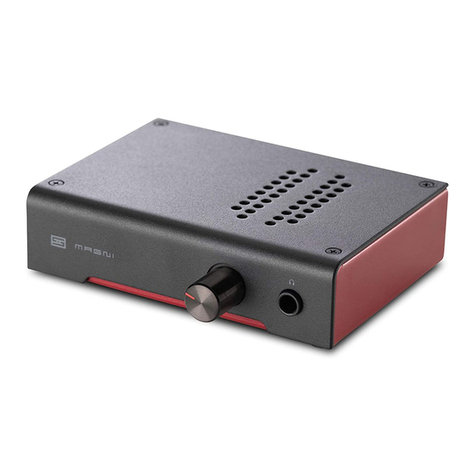
Schiit
Schiit MAGNI owner's manual
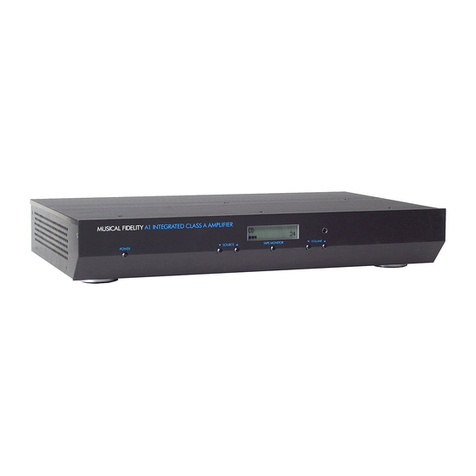
Musical Fidelity
Musical Fidelity A1 FBP Instructions for use
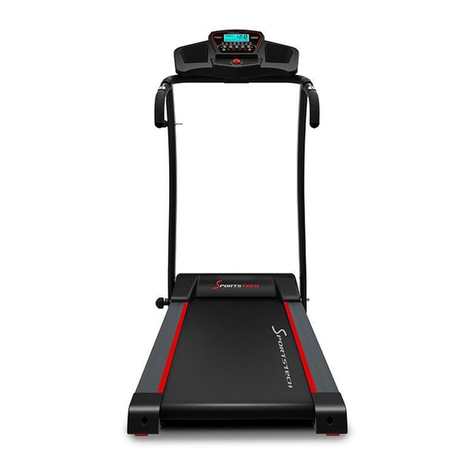
Pyle Pro
Pyle Pro PT610 owner's manual

Monacor
Monacor CarPower Power-2/400 Mounting instructions
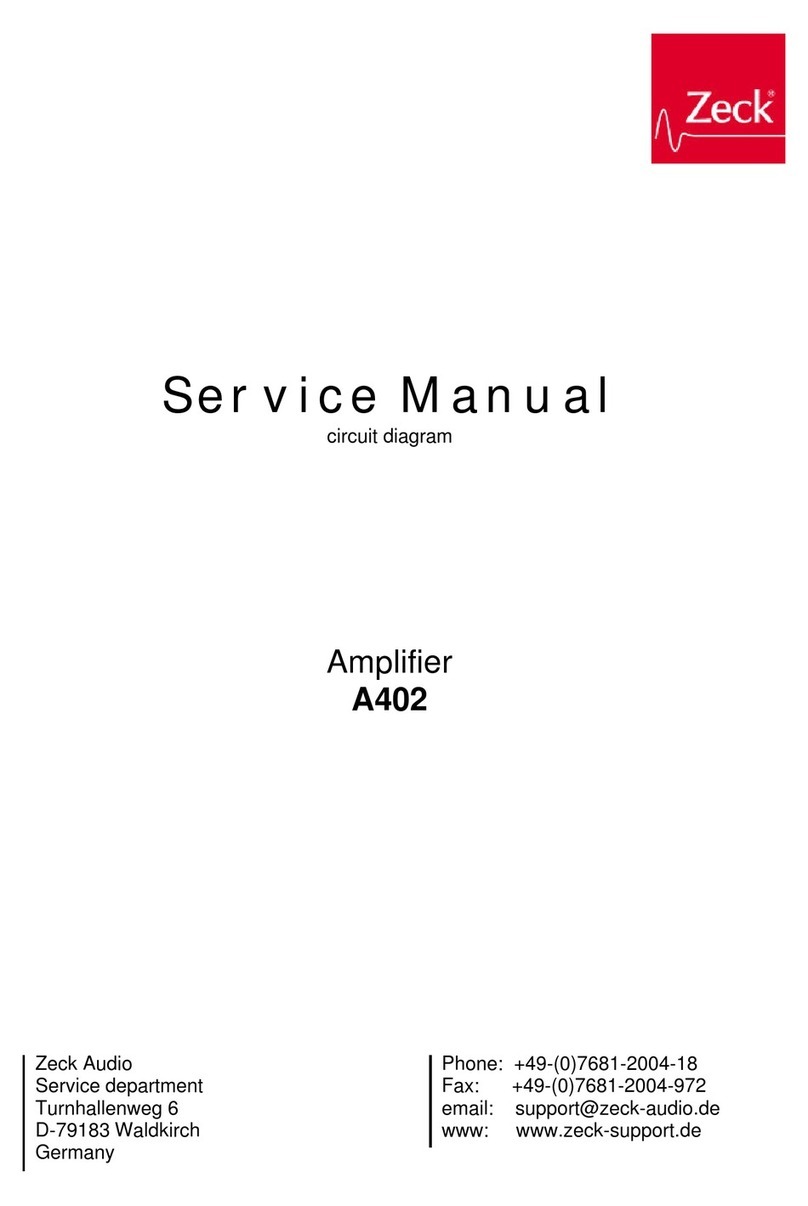
Zeck Audio
Zeck Audio A402 Service manual

Elite Acoustics Engineering
Elite Acoustics Engineering A4-58 quick start guide



